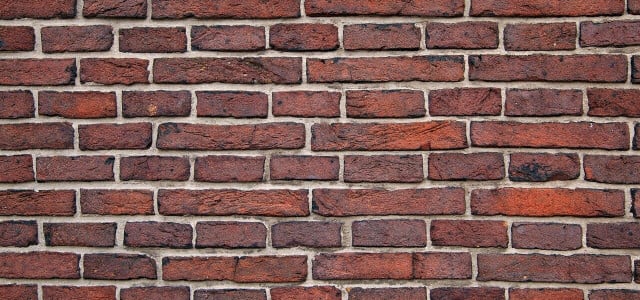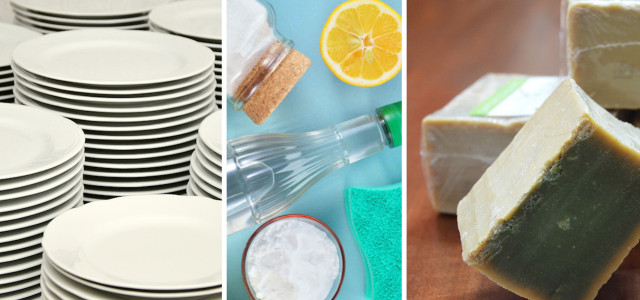Brick is a common building material used both inside and outside the home. It can require a bit of extra attention to keep it looking its best. Read on to learn how to clean brick.
Brick is a sturdy and long lasting substance that typically gets better with age. It doesn’t rot, rust, erode, or decay, and exposure to the elements can actually enhance its appearance. Like most materials, brick needs to be cleaned and maintained to ensure its long term survival. We’ll take a look at how to clean both indoor and outdoor brick using natural methods.
How to Clean Brick Inside
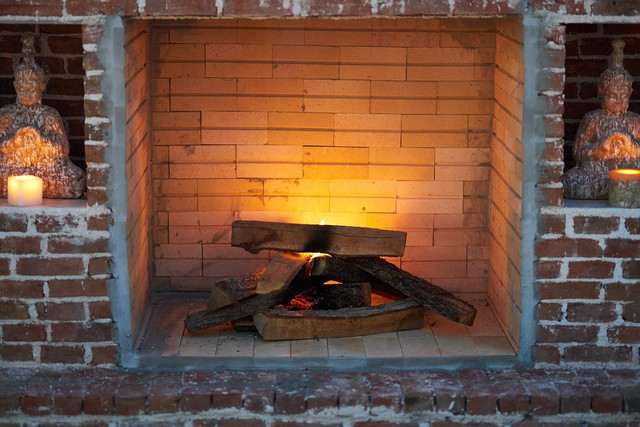
(Foto: CC0 / Pixabay / Engin_Akyurt)
If you’re wondering how to clean brick inside the home, you have a few options for a natural DIY cleaner: dish soap with salt, baking soda and dish soap, or vinegar. For indoor cleaning, you will need a few items depending on your preferred method:
- Cleaning accessories: spray bottle, buckets, bowl, brush/sponge, dust rag, vacuum
- DIY cleaner ingredients: water, liquid dish soap, salt, baking soda, vinegar
Dish Soap + Salt
- Dust the surface of the bricks with the rag or use a vacuum with attachment to remove any dust/dirt that has built up.
- Wet the bricks with either the spray bottle or use a small bucket and brush to add a layer of water.
- Mix together the liquid dish soap and salt until a paste forms in the bowl. You need enough to cover the bricks you will be cleaning, so you might need to add more as you go but the ratio is roughly 3 tablespoons of dish soap to 1 tablespoon of salt.
- Put a layer of the paste over the brick in a thin layer using a cleaning brush or sponge.
- Let the mixture sit on the brick for 10 minutes.
- Rinse the bricks with warm water from a clean bucket.
- Scrub the salt mixture from the bricks with your sponge or brush, dipping it into warm water as you go.
- Repeat as needed on stains or troublesome spots.
Dish Soap + Baking Soda
- Dust the surface of the bricks with a rag or use your vacuum to remove dirt and dust.
- Wet the bricks with the spray bottle or use a bucket to add a layer of water.
- Mix together dish soap and baking soda until a paste forms. Similar to the salt method, you need enough to cover the bricks in one thin layer so you need as much as your bricks need. To start, add 3 tablespoons of dish soap to ½ cup of baking soda.
- Smooth a layer of paste over the bricks and let sit for 10 minutes.
- Rinse the bricks with warm water from a clean bucket.
- Scrub the mixture with a sponge or brush.
- Repeat as needed on troublesome spots or stains.
Baking Soda + Vinegar
- Remove the dust from the bricks with a vacuum or dust rag.
- Wet the bricks with water.
- In the spray bottle, combine ½ cup vinegar with ½ cup water (or more as you need) and shake.
- Spray the bricks with the mixture.
- Let the mixture sit for a few minutes.
- Use a sponge or brush and warm water to scrub away the mixture.
- Fill a bucket with warm water and add 3 tablespoons of baking soda. Stir until the baking soda dissolves.
- Rinse the bricks with the mixture – the baking soda helps to dilute the vinegar odor and acid from the bricks.
- Rinse the bricks again with only warm water.
- Repeat as needed.
How to Clean Outdoor Brick – With Pressure Washers or a Garden Hose
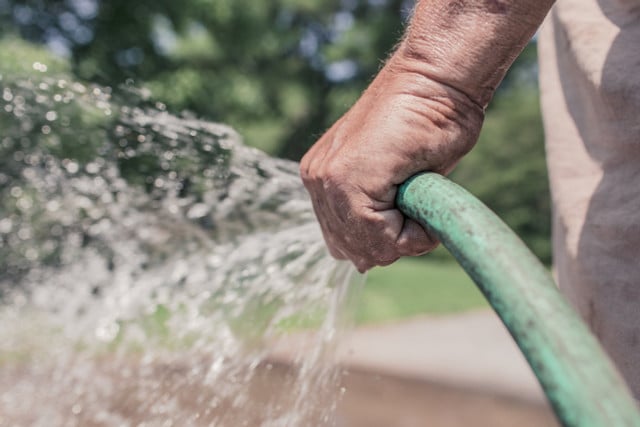


(Foto: CC0 / Pixabay / RyanMcGuire)
Outdoor bricks are much more exposed to the elements so may require more frequent care. They can also withstand harsher cleaning practices, but you can always use the indoor cleaners above on outdoor brick.
Pressure Washers
If you own a pressure washer, it can be a good tool for cleaning outdoor brick, however, bricks are not all made the same or from the same time. Stronger bricks can be pressure washed, but if you have brick older than 80 years old, consider asking a professional first.
- Check the brick for cracks before pressure washing, as these cracks can let water into the interior of the bricks which could cause damage later.
- Cover any windows or non-brick areas (including electrical areas and plants) with a tarp to protect them. If you are covering something with electricity, ensure the cover is waterproof.
- Set the pressure washer to the lowest setting and spray the brick to remove any grime.
- You can gradually increase the water pressure if the lower settings aren’t getting the dirt off.
Garden Hose
If you don’t own a pressure washer, you can always use a garden hose to clean the bricks.
- Remove dust from the bricks with a broom or sponge.
- Spray the brick with the hose using a nozzle attachment until the brick is saturated.
- Prepare a bucket of one of the indoor brick cleaning methods and coat the brick with the paste or spray.
- Scrub the brick with a sponge or cleaning brush.
- Rinse the brick with your hose until the mixture is gone.
- Repeat as needed.
Spot Treatment
Once you’ve washed the majority of the brick, there might still be a few stubborn spots or stains, including mold.
- Remove the dust with a sponge or brush.
- Wet the brick with water.
- Using a spray bottle with one of the natural cleaners mentioned above and spray the spot. Let the mixture sit for a few minutes
- Use a sponge or brush to work the spot.
- Rinse with water.
Tips and Tricks for Cleaning Brick
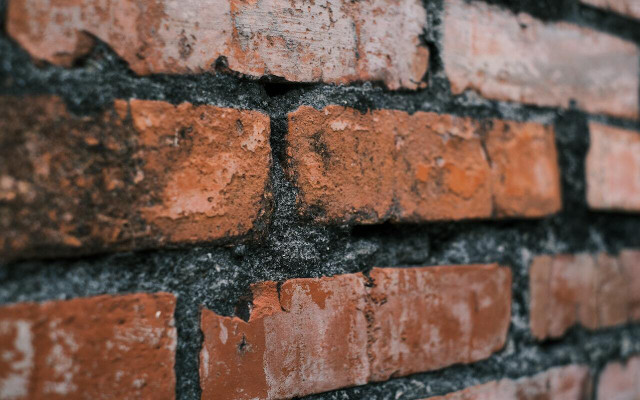


(Foto: CC0 / Unsplash / Arawark chen)
Once you’ve chosen your preferred method, use the following best practices when cleaning brick:
Indoor
- Start with a sponge – a sponge is gentler on the bricks than a brush, so start with a sponge to see if you can remove the stains. If not, a sturdier cleaning brush is a good upgrade, followed by a wire brush, which can be the most detrimental to the brick’s surface.
- Cover the area with cloths – cover the area you will be cleaning with cloths or tarps to protect the area around the brick.
- Remove dust first – you can use a vacuum, dry mop, or broom to remove the dust from the area you will be cleaning, but a broom and mop may cause dust to move around or fly through the air. The vacuum is your best bet for removing dirt and dust and keeping it contained, but it can be tough to use if the brick is in a hard to reach area.
- Protect yourself – make sure you wear gloves and protective eyewear when cleaning with chemicals (even natural chemicals) to ensure you are protected.
Outdoor
- Protect the area – it’s important to protect the area around where you will be cleaning so as to not harm plants, electricity or windows with the solution/water. Always waterproof the area as best as you can.
- Protect yourself – outdoor cleaning can get messy, so remember to wear waterproof shoes, gloves, and cover your eyes when cleaning.
- Spot test the cleaner – if you’re not sure if the cleaner will work on your brick, test it in a small spot first. Some bricks can be discolored by harsher chemicals.
Read on:
- How to Clean Grout: Natural DIY Grout Cleaner
- How to Clean Mirrors Naturally: Easy DIY Cleaning Solution
- Citric Acid for Cleaning: Practical Household Uses
Do you like this post?






